ONLINE EDUCATION
IT’S GROWING AND IT’S HERE TO STAY, AS THE REGION’S COLLEGES AND UNIVERSITIES HAVE LEARNED
PAGE 30

PREMIER BUSINESS MAGAZINE OF THE NORTHERN PLAINS | NOVEMBER 2017
Alicia Swanson, assistant professor of nursing and health care leadership, Minnesota State University Moorhead




















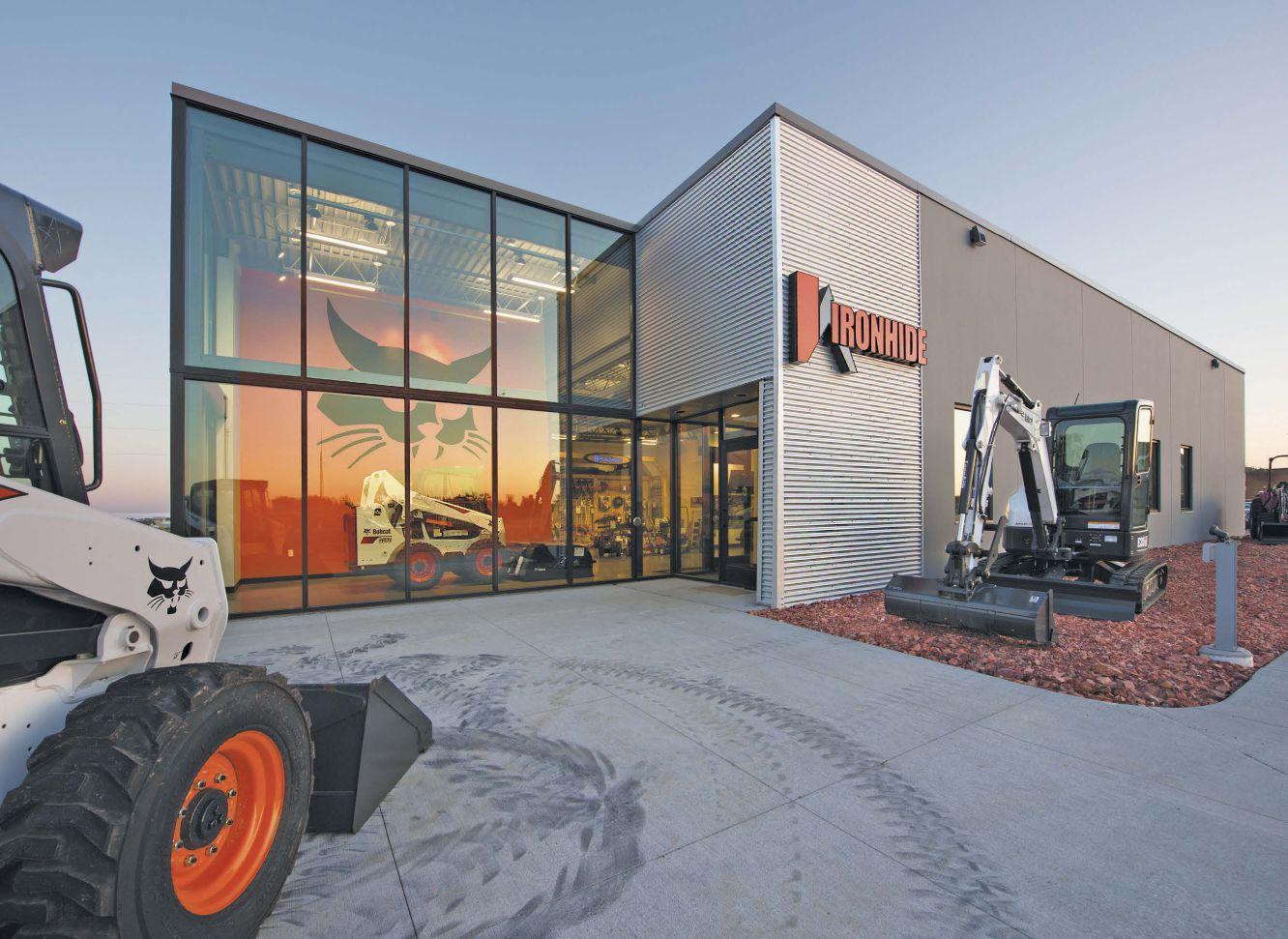
Ironhide Equipment – the parent company for Bobcat Companies of Grand Forks, Devils Lake, and Williston – has a new rough and ready home to elevate their already-exceptional sales, rental, repair, and parts service in one single, one-stop-shop location in Devils Lake. jlgarchitects.com 100% EMPLOYEE OWNED Inc. Magazine’s 50 Best Places to Work in America | Architect Magazine Top 50 US Firm IRONHIDE EQUIPMENT | DEVILS LAKE, NORTH DAKOTA BOLD NEW BREED
Go from “Is it possible?” to “What’s next?”
*
Business Quick Loan interest rates as low as 3.49%


Nick Guarcello | Business Banking - Bismarck | 701.222.6299
Nic Wagner | Business Banking - Grand Forks | 701.795.6197
Tyler Kummeth | Business Banking - Fargo | 701.235.0177
usbank.com/quickloan
*The 3.49% interest rate applies to a new or used equipment Quick Loan up to 80% LTV for loan terms up to 36 months for credit-qualified applicants. Disclosed rate reflects 0.50% discount based on automatic monthly payments from a U.S. Bank Business Checking account. Automatic payment from a U.S. Bank Business package checking account is required to receive the lowest rate, but is not required for loan approval. A $75 origination fee applies to all loans and will impact final APR. Higher rates may apply based on a lower credit score, a higher LTV or not having automatic monthly payments taken from a U.S. Bank Business Checking account. Advertised rate is as of 08/28/2017 and subject to change without notice based on market conditions. Minimum Quick Loan amount is $5,000. Maximum Quick Loan amount is $250,000. Credit products offered by U.S. Bank National Association and are subject to normal credit approval and program guidelines. Some restrictions and fees may apply. Financing maximums and terms are determined by borrower qualifications and use of funds. See a banker for details.
*The 3.49% interest rate applies to a new or used equipment Quick Loan up to 80% LTV for loan terms up to 36 months for credit-qualified applicants. Disclosed rate reflects 0.50% discount based on automatic monthly payments from a U.S. Bank Business Checking account. Automatic payment from a U.S. Bank Business package checking account is required to receive the lowest rate, but is not required for loan approval. A $75 origination fee applies to all loans and will impact final APR. Higher rates may apply based on a lower credit score, a higher LTV or not having automatic monthly payments taken from a U.S. Bank Business Checking account. Advertised rate is as of 08/28/2017 and subject to change without notice based on market conditions. Minimum Quick Loan amount is $5,000. Maximum Quick Loan amount is $250,000. Credit products offered by U.S. Bank National Association and are subject to normal credit approval and program guidelines. Some restrictions and fees may apply. Financing maximums and terms are determined by borrower qualifications and use of funds. See a banker for details. U.S. Bank is not offering legal, tax or financial advice. You should consult with your tax advisor for the specific impact of the Section 179 deduction and how it may apply to your business. Credit products are offered by U.S. Bank National Association. Deposit products offered by U.S. Bank National
Member FDIC. ©2017 U.S. Bank.
Association.
U.S. Bank is not
legal, tax or financial
consult with
tax
for
impact
products
National Association. Deposit products offered by U.S. Bank National Association. Member FDIC. ©2017 U.S. Bank. “World’s Most Ethical Companies” and “Ethisphere” names and marks are registered trademarks of Ethisphere LLC. Business Quick Loan interest rates as low as 3.49%* Nick Guarcello | Business Banking - Bismarck | 701.222.6299 Nic Wagner | Business Banking - Grand Forks | 701.795.6197 Tyler Kummeth | Business Banking - Fargo | 701.235.0177 usbank.com/quickloan
offering
advice. You should
your
advisor
the specific
of the Section 179 deduction and how it may apply to your business. Credit
are offered by U.S. Bank
Quick Loan
179 tax
Talk to your local U.S. Bank Business Banker today.
With a Business
from U.S. Bank, you may be able to finance equipment for your expanding business needs. You may even be eligible for a Section
deduction up to $500,000.




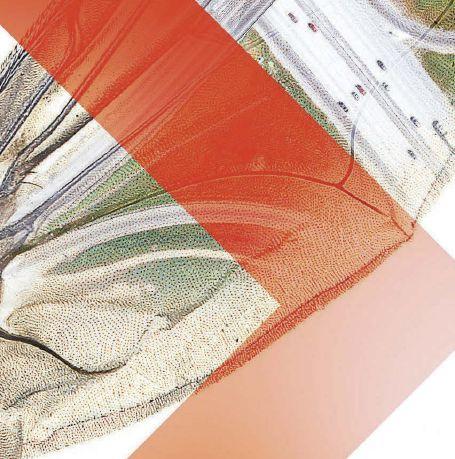







25 years of
LOW CHANGE ORDERS
For 25 years, Obermiller Nelson Engineering (ONE), has delivered success to our clients by providing professional, detailed Mechanical, Electrical and Civil design and coordination for building systems.
Our firm boasts some of the industry’s lowest design-related change order percentages. We accomplish low change orders as a team because we communicate and we work hard. We communicate openly and honestly with one another in-house via our design software, team whiteboard meetings, and many other channels. We communicate with our clients throughout the project so we’re always on the same page. Our designers are encouraged to attend project meetings, opening up communication lines. We’re also willing to do what it takes to make our clients happy. At ONE, we’re willing to uphold the standards we’ve set for ourselves.

WWW.OBERNEL.COM
16 Prairie People
APP’Y TO HELP ADD BANKING TO THE MANY REGIONAL SERVICES NOW AVAILABLE ON YOUR PHONE
CLINICAL WEARABLES
LOCAL HOSPITALS AND CLINICS HAVE MOVED FAR BEYOND FITBITS WHEN IT COMES TO WEARABLE DEVICES

Health care Higher education
ONLINE EDUCATION POWERS UP HIGH NUMBERS OF STUDENTS AT AREA COLLEGES NOW ARE TAKING COURSES AND COMPLETING DEGREES ONLINE
36
Alicia Swanson, an assistant

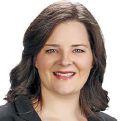

professor,
38
TELLS HOW THIS VITAL FARM-COUNTRY TASK GETS DONE
AROUND THE OFFICE
TWITTER.COM/PRAIRIEBIZ FACEBOOK.COM/PRAIRIEBUSINESS PRAIRIEBUSINESSMAGAZINE.COM 8 INSIDE FEATURES DEPARTMENTS 10 EDITOR’S NOTE THE ALL-IMPORTANT WEB BY TOM DENNIS FAMILY BUSINESSES 12 SUCCESSFUL SUCCESSIONS FOR FAMILY BUSINESSES, PLANNING AND COMMUNICATION ARE ESSENTIAL TO PASSING THE BUSINESS ON TO THE NEXT GENERATION / BY STEPHANIE LARSCHEID 14 ENTREPRENEURIALISM THE ENTREPRENEURIAL MINDSET BUSINESSES AND UNIVERSITIES ALIKE MUST CULTIVATE CREATIVE, CHALLENGING THINKING / BY MATTHEW BORCHERDING prairie people VISIT WWW.PRAIRIEBUSINESSMAGAZINE.COM TO SEE THESE AND OTHER NEW HIRES, PROMOTIONS AND AWARD WINNERS IN THE REGION. LISA OTTERSON, DR. MEGAN CHRISTENSEN, AN ANESTHESIOLOGIST, HAS JOINED ALTRU HEALTH SYSTEM IN GRAND FORKS, N.D. SHE COMPLETED HER ANESTHESIOLOGY RESIDENCY AT THE UNIVERSITY OF NEBRASKA MEDICAL CENTER. HAS BEEN NAMED BY THE SOUTH DAKOTA STATE UNIVERSITY FOUNDATION AS THE NEW DEVELOPMENT DIRECTOR FOR THE COLLEGE OF PHARMACY AND ALLIED HEALTH PROFESSIONS
19
TEAM EFFORT THE PRIVATE SECTOR RANKS AS ONE OF K-12 EDUCATION’S MOST INFLUENTIAL PARTNERS / BY KIRSTEN BAESLER 20 BUSINESS INSIDER WITH THE GRAIN KIA ADAMS-MIKESH, NORTH DAKOTA GRAIN INSPECTION VICE-PRESIDENT,
At its digital lab in San Francisco, Wells Fargo designs and showcases the bank’s emerging technologies. IMAGE: WELLS FARGO
K-12 EDUCATION
34
HOME COURT ADVANTAGE THERE’S SOMETHING TO BE SAID FOR WORKING IN A SPECTACULAR SETTING, SUCH AS THE UNIVERSITY OF JAMESTOWN’S NEW $15.5 MILLION HAROLD NEWMAN ARENA NOVEMBER 2017 VOL 18 ISSUE 11
INSIGHTS & INTUITION
BY THE NUMBERS
on-campus nursing classes at
Moorhead. IMAGE:
NEWS SERVICE 22 26 30
ON
THE COVER
teaches online and
Minnesota State University
NICK NELSON/FORUM
Banking & finance






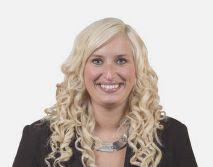



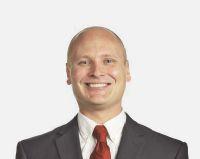
The all-important Web
Prairie Business stories are labeled according to industry – “Health care,” “Higher education,” “Banking & finance” and so on. But this month –as happens many months – I’m tempted to add to these labels three more words: Health care and the Internet. Higher education and the Internet.
Banking & finance and the Internet. The Internet’s impact on these industries simply can’t be overstated. For as the stories in this issue show, the biggest and most important trends affecting those fields all are rooted in the Web.
In health care, hospitals and clinics increasingly are sending patients home with wearable devices – medical technology that is not only portable, but also Internet compatible, meaning the device’s data can become a part of the patient’s medical record.
Online courses and degree programs in higher education now enroll nearly half of the students on some local campuses. You’d be hard-pressed to find a more dramatic change on those campuses over the past 10 years.
And one of these days in banking & finance, that ATM card in your wallet will go the way of the slide rule, as the card’s function – like the slide rule’s function, for that matter – will be taken over by your smart phone.
On these and other developments, companies in our region are not only keeping pace, they’re leading the way. The Dakotas and western Minnesota are “backwaters” no longer – a historic development that also stems in some large part from the Internet. PB
PUBLISHER KORRIE WENZEL

AD DIRECTOR STACI LORD EDITOR TOM DENNIS CIRCULATION MANAGER BETH BOHLMAN
LAYOUT DESIGN, AD DESIGN JASON MAGSTADT KRIS WOLFF
ACCOUNT MANAGERS NICHOLE ERTMAN
800.477.6572 ext. 1162 800.477.6572 ext. 1167
JENNIFER LEROUX OLSZEWSKI
Prairie Business magazine is published monthly by the Grand Forks Herald and Forum Communications Company with offices at 375 2nd Avenue North, Grand Forks, ND 58203. Subscriptions are available free of charge. Back issue quantities are limited and subject to availability ($2/copy prepaid).
The opinions of writers featured in Prairie Business are their own.
Unsolicited manuscripts, photographs, artwork are encouraged but will not be returned without a self-addressed, stamped envelope.
SUBSCRIPTIONS
Subscriptions are free www.prairiebusinessmagazine.com
ADDRESS CORRECTIONS
Prairie Business magazine Box 6008 Grand Forks, ND 58206-6008 Beth Bohlman: bbohlman@prairiebusinessmagazine.com
ONLINE www.prairiebusinessmagazine.com
10 TWITTER.COM/PRAIRIEBIZ FACEBOOK.COM/PRAIRIEBUSINESS PRAIRIEBUSINESSMAGAZINE.COM EDITOR’sNote NOVEMBER 2017 VOL 18 ISSUE 11
nertman@prairiebusinessmagazine.com jlolszewski@prairiebusinessmagazine.com
Good reading, TOM DENNIS I welcome your feedback and story ideas. Call me at 701-780-1276 or email me at tdennis@ prairiebusinessmagazine.com.
TOM DENNIS
TDENNIS@PRAIRIEBUSINESSMAGAZINE.COM 701.780.1276













11
How to succeed at succession
Here’s the secret to successfully passing on a family business to the next generation: Plan ahead
SIOUX FALLS, S.D. – What makes a family business successful through generations and decades? It all boils down to communication. Those who talk about and plan for the future of their family business tend to be more likely to make a successful transition from one generation to the next.
It’s not easy. But, if families set aside time to talk through the challenges and opportunities of being a family in business together, their chances of success will increase.
I’m not talking about dinner-table or family Thanksgiving time. Instead, I’m talking about time regularly set aside by families to map out who they are and how they’re going to get where they want to go.
According to Harvard Business School, family businesses comprise at least half of all companies in the United States. Regionally, that number may be even higher. Think about businesses in our region such as H.A. Thompson & Sons, a business that is more than 100 years old and in its fourth generation of ownership and management. The Thompson Family has set aside time to have family meetings, and they use their family business as a competitive advantage, both internally and externally.
A well-planned succession can take five to 10 years to plan and implement. For the sake of the business and the family, these years of planning create and maintain a healthy family and business.
It’s never too early to begin having regular communication about the future of the business and the family.
For those who are in a family business, do you have family meetings? If so, great job! You are on the right track. You are likely talking through the good, the bad and everything in between. Keep up the communication. Your business, your family, your employees, your customers and the communities where you do business will thank you for it.
If you don’t have family meetings to talk about topics such as ownership, future leadership, voting shares, non-voting shares, the buysell agreement and other topics, consider holding a family meeting. If you don’t know where to start, ask one of your business advisors to facilitate the family meeting.
Or, discover who your family CFO is – your Chief Family Organizer. One family member holding the rest of the family accountable can enhance the chances of keeping communication regular and following through on action plans.
Tharawat magazine has published data on the economic impact of family businesses. In the United States, more than 63 percent of the gross domestic product is contributed by family businesses.
If you are not involved in a family business, as you make your own business and personal buying decisions, consider supporting one. Think about what family businesses do for the economy in terms of employing local residents, supporting local organizations and making the community a vibrant one.
Recently, area family businesses came together at a family business forum in Bismarck, N.D., to learn from professionals and one another. Prairie Family Business Association, an outreach center of the Beacom School of Business at the University of South Dakota, hosted the daylong event.
Many of these families have started transition discussions, and some are well on their way to implementing the transition plan. Others in attendance are just beginning to discuss and plan for succession.
Wherever Prairie Business readers may be in their family business lifecycle, I urge them to consider surrounding themselves with others who understand the unique challenges and opportunities of being in business with family members.
When a family business succeeds, many others experience success along with the family owners of the business. Put in the hard work, time and communication to make the family business a success. Future generations of your family and your community will thank you.
To learn more about Prairie Family Business Association and the services offered for family businesses, visit www.fambus.org or call 605274-9530. PB
Stephanie Larscheid EXECUTIVE DIRECTOR PRAIRIE FAMILY BUSINESS ASSOCIATION STEPHANIE.LARSCHEID@USD.EDU

12 TWITTER.COM/PRAIRIEBIZ FACEBOOK.COM/PRAIRIEBUSINESS PRAIRIEBUSINESSMAGAZINE.COM FAMILYBUSINESSES NOVEMBER 2017 VOL 18 ISSUE 11
By Stephanie Larscheid
STEPHANIE LARSCHEID IMAGE: PRAIRIE FAMILY BUSINESS ASSOCIATION





13
Channeling the entrepreneurial mindset
By Matthew Borcherding
FERGUS FALLS, Minn. – Bob Dylan said it best in “The Times They Are A-Changin’ ” when he sang, “And keep your eyes wide. The chance won’t come again.” In essence, Dylan defined the entrepreneurial mindset: Keep your eyes open for opportunity, and take quick, decisive actions and calculated risks.
Our world will no longer wait for innovation to bubble up out of the ground. Instead, innovation and growth need to become ways of thinking, because when they do, stagnancy of thought is replaced by dynamic and revolutionary ideas.
Both higher education and the private sector have a prime opportunity to transform the way we do business. And the time is now.
As an educational administrator, I am keenly aware of the demands on the 21st century global citizen. Our students are constantly connected to others across the globe, which means that now more than ever, we need to prepare them in both the traditional disciplines and global citizenry.
But to do so, we must teach our students not only to be bold and to think outside of the box, but also to develop skills to forge relationships outside of the internet.
Further, we must keep developing in students the critical thinking skills that leaders in business and industry crave.
Those leaders are desperate for graduates who are adept at thinking independently, as well as at generating both big ideas and progressive innovation. While some may say that the newest graduates are not prepared for the workforce, I would argue that that they are ready to change the workforce to meet the needs of the 21st century.
To make that change, educational and business leaders alike will need to hone and develop their own entrepreneurial mindsets.
Being an entrepreneur means more than inventing new products or redeveloping systems. When I was still teaching, I often encouraged my students to look beyond the obvious for solutions, and I reminded them that anyone can look up facts and figures in seconds.
What they needed, more than anything, was free rein to think independently of the constructs in which we bind ourselves so often.
Using that framework, I found that students could develop new and cogent ideas that had strong implications for the future. During an environmental science course, for example, I asked students to address a real-world issue and develop a method to reduce nutrient pollution in a nearby lake. I stipulated that limited resources were available to solve the problem.
Aside from that, I tried to let the students’ creativity run free – and the results and suggestions were astounding.
We need to inspire our young people to develop this mindset by encouraging the following five basic tenets:
Failure is acceptable. No one in history got it right the first time. Embrace change. The status quo will not take us further into the future.
Be fearless and optimistic. Hope is a powerful emotion that can guide us all.
Be decisive. It’s OK to act to get results.
Think big. Do not let your imagination be stymied by established social constructs.
If we all embrace these tenets and in whatever career we choose, the result will dramatically move our society forward.
Higher education and modern business are at a critical juncture, and we in those fields must spot opportunities and act on them before they vanish. I urge regional business and education leaders to harness the power of the fresh and innovative thinking of today’s generation.
Entrepreneurialism is more than a concept; it is a way of thinking. The times they are a-changin,’ and we all must be prepared to adapt to those changes with our eyes wide open for opportunity and growth.
Dr. Borcherding is the dean of liberal arts and sciences at Minnesota State Community and Technical College. He is a former biology faculty member at M State.
He’ll be speaking on the topic of ‘The Entrepreneurial Mindset’ at the MNWest CEO Forum & Entrepreneur Summit, an event that will be held Nov. 7 at Minnesota State Community and Technical College in Fergus Falls, Minn. PB

14 TWITTER.COM/PRAIRIEBIZ FACEBOOK.COM/PRAIRIEBUSINESS PRAIRIEBUSINESSMAGAZINE.COM ENTREPRENEURIALISM NOVEMBER 2017 VOL 18 ISSUE 11
MATTHEW BORCHERDING IMAGE: KATIE TYSDAL/M STATE






15
Prairie People
KLJ Hires Michel BISMARCK – KLJ recently hired Eric Michel as the vice president of the Energy and Natural Resources Division.
Michel brings more than 30 years of engineering and business management to KLJ. His experience includes profitability improvement, leadership development, and innovative problem solving on a regional, national and global level.
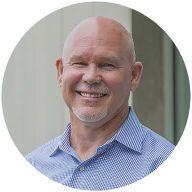
He received a bachelor’s degree in electrical and electronics engineering from North Dakota State University and is a registered Professional Engineer in North Dakota, South Dakota, Iowa, Nebraska, Minnesota, Wisconsin, Illinois, and Wyoming.
He currently serves as the president of the North Dakota Chapter of American Council of Engineering Companies and is an active member of the North Dakota State University Foundation and Alumni Association.
Michel is based in KLJ’s St. Paul office.
Burgum appoints Kruse to lead N.D. Department of Financial Institutions
BISMARCK, N.D. – North Dakota Gov. Doug Burgum appointed Lise Kruse to lead the state Department of Financial Institutions, where she has served as chief examiner of banks since January 2011.
The department oversees North Dakota’s state-chartered banks and credit unions as well as other financial companies. Kruse replaces Commissioner Robert Entringer, who will retire Nov. 30.
A native of Elverum, Norway and a North Dakota resident since 1997, Kruse earned a bachelor’s degree in business and organizational communication in 1996 from Concordia College in Moorhead, Minn., and a masters of business administration degree with an emphasis in information technology in 2003 from the University of Colorado Colorado Springs.
She graduated from the Colorado Graduate School of Banking in Boulder in 2012 and has served as chair of the Conference State Bank Supervisors’ Risk Identification Team.
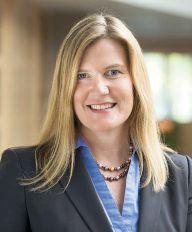
This appointment requires confirmation by the North Dakota Senate.
Shover to lead UAS business development for Grand Forks Region EDC
GRAND FORKS, N.D. - The Grand Forks Region Economic Development Corp. announced that Wes Shover has joined the organization as UAS Sector Development Manager to lead business recruitment in the unmanned systems industry.
Shover has more than 10 years of military, commercial and entrepreneurial experience in the industry as a trainer, logistics manager and business owner.
He served in the U.S. Air Force for four years. Following his military service, he entered the private sector, where he worked for companies supporting the training and development of manned and unmanned intelligence, surveillance and reconnaissance student aircrews.
Shover also conducted unmanned systems support for companies operating UAS platforms.
Wells Fargo Business Banking names Jeff Glas leader for Bismarck-Mandan

BISMARCK, N.D. – Jeff Glas has been named the market leader for the Business Banking team in Bismarck and Mandan, N.D., Wells Fargo Business Banking announced.
Glas will manage local market relationships and daily business operations in Bismarck and Mandan as well as maintaining his position as business banking manager in Minot, N.D.
Glas began his career at Wells Fargo in 2010 as a business banking trainee in Des Moines, Iowa. He also worked as a business relationship manager in Colorado before transferring to a role as senior business relationship manager for Bismarck in 2013.
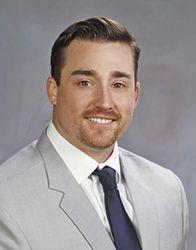
Glas replaces John Giese, who recently retired after 37 years with Wells Fargo in the Midwest region.
Glas has a bachelor’s degree in business management and a master’s degree in business administration from the University of North Dakota.
PrairiePeople NOVEMBER 2017 VOL 18 ISSUE 11
16 TWITTER.COM/PRAIRIEBIZ FACEBOOK.COM/PRAIRIEBUSINESS PRAIRIEBUSINESSMAGAZINE.COM
Bande named department chair for UND School of Medicine and Health Sciences
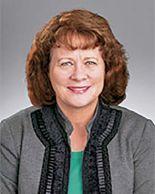
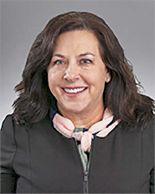

GRAND FORKS, N.D.— Dr. Dinesh Bande, clinical associate professor of medicine at the University of North Dakota School of Medicine and Health Sciences and hospitalist with Sanford Health, has been named the new chair of the school’s Department of Internal Medicine.

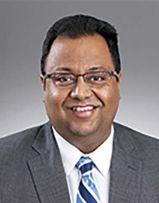
Bande, who is based in Fargo, N.D., and has been the school’s Internal Medicine clerkship director for third-year medical students since 2015, is assuming the role long held by chair emeritus Dr. William Newman.
Among other responsibilities in his new role, Bande will lead the department in ways that will support the school’s goal of being a national leader in rural medicine, patientcentered learning, and research.
Bande completed his medical education at the University of Health Sciences’ Kurnool Medical College in India in 2006 and was a resident in Internal Medicine at the UND SMHS Southeast Campus in Fargo, N.D., from 2008 to 2011.
He is certified by the American Board of Internal Medicine and also been a Hospice physician at Hospice of the Red River Valley since 2014.
Sanford Health welcomes six new providers
FARGO, N.D. – Six new providers have recently joined the Sanford Health Fargo team.
Katherine Klipfel, Ph.D., received her graduate degree from Kent State University in Kent, Ohio. She specializes in pediatric neurology at the Sanford Professional Building in Fargo.
Lori Loomis received her graduate degree from the University of North Dakota in Grand Forks, N.D. As a nurse practitioner, she specializes in gastroenterology at Sanford Broadway Clinic in Fargo and is board certified as a family nurse practitioner by the American Academy of Nurse Practitioners.
Mary MacLeod received her graduate degree from the University of Minnesota Twin Cities in Minneapolis. As a certified registered nurse anesthetist, she specializes in anesthesiology at Sanford Medical Center Fargo. She is board certified by the National Board of Certification and Recertification for Nurse Anesthetists.
Smith joins Cornerstone Mortgage

Austin Smith has joined Cornerstone Mortgage as a home mortgage consultant in Grand Forks, N.D.
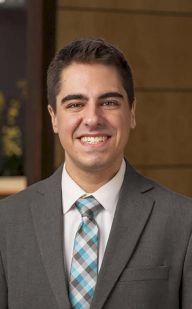
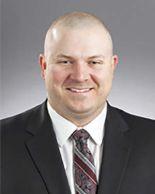
Smith graduated from the University of North Dakota. He started his banking career as a teller before working in commercial banking. He brings two years of banking experience and seven years of customer service experience.
Cornerstone Holding Company, based in North Dakota, is the parent company of Cornerstone Bank and is one of North Dakota’s ten largest financial institutions.
Dr. Gautam Sachdeva received his medical degree from Government Medical College in Patiala, India. He specializes in neurology at Sanford Neuroscience Clinic in Fargo.
Laurie Somerville received her graduate degree from NOVA Southeastern University in Fort Lauderdale, Fla. As a physician assistant, she specializes in pain management at Sanford South University Urgent Care in Fargo. She is board certified as a physician assistant by the National Commission on Certification of Physician Assistants.
Dr. Alex White received his medical degree from the University of Nebraska College of Medicine in Omaha. He specializes in orthopedic trauma at Sanford Medical Center Fargo.
PRAIRIE PEOPLE
17









Partners for the future
Businesses encourage innovation in North Dakota education
writing computer language. Until this year, North Dakota required a high school student to have at least three units of math to graduate. SB 2185, which took effect in August, now allows a student to substitute a unit of computer science for one of the three units of mathematics.
Students knowledgeable about computer science have a promising job outlook, according to Code.org, a nonprofit group that promotes computer science instruction in schools. The organization says North Dakota has more than 600 open computing jobs, and an average $70,000 salary for a computing occupation.
Ninety-three percent of parents want their child’s school to teach computer science, but only 40 percent of schools do, Code.org says. Half of Americans rank computer science as one of the two most important subjects to learn in school, after reading and writing, the organization says.
North Dakota’s conversation about education innovation and accountability owes a great deal to Ted Dintersmith, an entrepreneur and philanthropist who produced an education documentary called “Most Likely to Succeed.”
Dintersmith argues persuasively that our American model of public education, with its rows of desks and 50-minute class periods, is unsuited to helping students learn the ability to analyze issues, solve problems, work as teams and be adaptable to different situations. “Most Likely to Succeed” focuses on a school that lets students learn those skills by working on projects together.
The film has been shown in a number of North Dakota cities, with the support of the Department of Public Instruction, North Dakota United and the Greater North Dakota Chamber. Members of all three organizations realize that encouraging innovation in education is the key to the future of our young people and the linchpin of North Dakota’s economic prosperity.
The Chamber is one of several private-sector entities that have stepped up to encourage education innovation in schools.
BISMARCK, N.D. – Innovation is necessary for any business to endure and thrive. In education, we recognize that we must innovate to provide the best instruction for our students, and to prepare them for a future in which many jobs are now barely a gleam in an entrepreneur’s eye.
How are we encouraging innovation in our schools? This spring, our Legislature endorsed a landmark bill, Senate Bill 2186, with bipartisan sponsorship and overwhelming bipartisan approval.
This bill encourages local schools to rethink how they deliver education.
Under the bill, school districts may draft education innovation plans, in consultation with their local parents, teachers, administrators and school board. The superintendent of public instruction will review any innovation plan and be able to clear away obstacles to success.
SB 2186 requires periodic reports to the Legislature to ensure accountability.
Our Legislature also approved a bill to encourage more high school students to acquire a working knowledge of computer science and
ExxonMobil has pledged $13 million to support the National Math + Science Initiative, which has made it possible for more North Dakota students to take Advanced Placement coursework and exams in math, science, computer science and English. NMSI, a nonprofit organization, has also provided invaluable training that has helped North Dakota teachers hone their classroom instructional skills.
Hess Corp. provided $25 million for Succeed 2020, an initiative that helped to boost high school graduation rates and increase the number of students who qualified for up to $6,000 in state academic scholarship aid.
In early October, Microsoft announced it was launching its “TechSpark” initiative in North Dakota, which encourages computer science education and better access to broadband internet connections in rural areas.
As North Dakota’s school superintendent, I am committed to seeking more public-private partnerships to work together, seize opportunities and advance the well-being of our students. After all, our young people are 25 percent of our population, and 100 percent of our future. PB
 By Kirsten Baesler Kirsten Baesler
KIRSTEN BAESLER
IMAGE: N.D. DEPARTMENT OF PUBLIC INSTRUCTION
By Kirsten Baesler Kirsten Baesler
KIRSTEN BAESLER
IMAGE: N.D. DEPARTMENT OF PUBLIC INSTRUCTION
SUPERINTENDENT, NORTH DAKOTA
OF PUBLIC INSTRUCTION BISMARCK, N.D. 19 K-12 EDUCATION
DEPARTMENT
With the
grain
Kia Adams-Mikesh
grew up in the grain inspection industry and has worked for her family’s business, North Dakota Grain Inspection Service of Fargo, for six years.

She is a graduate of the University of Minnesota Carlson School of Management. She started out at NDGI as project manager and was promoted to vice president in 2016. She’s on the board of directors for the American Association of Grain Inspection & Weighing Agencies, and was appointed by the U.S. secretary of agriculture to serve on the federal Grain Inspection Advisory Committee.
GIVE US A HISTORY OF YOUR COMPANY AND YOUR FAMILY’S INVOLVEMENT WITH IT.
Q. Q. A. A.
North Dakota Grain Inspection Service has been serving the inspection needs of eastern North Dakota and western Minnesota since 1968. Shortly after the founding, my grandfather, Steve Adams, started at NDGI and worked his way up to management.
Around 1990, Steve became the sole owner. His goal was to provide the most accurate and effective service for customers. This led to NDGI’s first acquisition in Illinois, an expansion that took the company from sampling railcars and trucks to sampling barges on the Mississippi River.
My father, Mike Adams, helped lead this expansion, and it started his career in management. Around 2011, my two brothers and I began working full-time for the company. My oldest brother, Michael, is the manager in Ohio, and my youngest brother, Mark, is our quality assurance manager.
From 2014 to 2016, NDGI made three acquisitions, expanding territory and services into Indiana and Ohio. Like my father’s experience in Illinois, I followed a similar path with Ohio and Indiana, leading me to learn new skills and grow my career to vice president. I’ve spent the past few years integrating and growing the new territories.
WHAT ABOUT YOU? HOW DID YOU COME TO WORK WITH THE FIRM?
In high school, I dreamed of working for a large corporation in a large city – everything different than I had experienced in Fargo. To start out, I attended the Carlson School of Management at the University of Minnesota.
I feel fortunate for the experiences I gained in classes and internships, but I quickly learned that it was not my passion. Instead, I found myself doing every class project on our family business back in North Dakota.
Gradually, it dawned on me that this was the path I was meant to take. When I was a junior in college, I started the discussion with my family – and was immediately told that I could not come back, because there wasn’t a place for me. Not the response I was expecting!
In fact, my father and grandfather had taken that approach to make sure that working for the company was what I truly wanted. But I learned that only later, after I’d worked hard to prove to them that I would be an asset.
I must have been convincing, because I headed back to Fargo to work for NDGI as the project manager immediately after graduation.
It has been six years, and I’ve never regretted the choice that I made. I am extremely grateful for the opportunity to live my passion.
20 TWITTER.COM/PRAIRIEBIZ FACEBOOK.COM/PRAIRIEBUSINESS PRAIRIEBUSINESSMAGAZINE.COM BusinessInsider NOVEMBER 2017 VOL 18 ISSUE 11
Kia Adams-Mikesh is vice-president of North Dakota Grain Inspection in Fargo IMAGE: NICK NELSON, FORUM NEWS SERVICE
Q. A.
WHAT TRAINING AND EXPERIENCES HAVE HELPED YOU THE MOST WITH YOUR JOB?
The three types of training and experiences that have helped me the most are industry, education and curiosity.
Beginning in high school with our local DECA chapter, I found that industry and networking were great ways to gain knowledge. I took what I learned in that high school business chapter, and applied it to college and jobs.
I take every opportunity to get involved in “bigger picture” organizations. It’s easy to get tunnel vision within your company, and these associations and conferences help to broaden your understanding.
A few years ago, I was appointed to the federal Grain Inspection Advisory Committee, where I’ve gained the most knowledge on the effects of grain inspection on domestic trade and exports. Serving on the board of directors for TrueIT, a local IT company in Fargo, also has been invaluable. Nothing can replace a good education, and by “education” I mean not only schooling but also forging your own path. It isn’t enough to just attend classes; you must embrace every opportunity that is presented to you.
For example, I was impressed by my college professors’ knowledge and experience, and I tried to learn even more from them by bringing case studies about our company to their attention. Not only did this help our company, but also it cemented the professors’ lectures in my mind by applying their teachings to my life.

Education also can be acquired in other ways, such as by reading business and agriculture magazines, researching new topics, attending conferences and webinars, and networking. There’s no standard training that teaches the inner workings of the grain inspection industry, but I did my best by immersing myself in everything. Curiosity led me to learn the most I could.
On my very first day, for example, I started reading the Federal Grain Inspection Service Handbooks –thousands of pages that outline any situation we may encounter and how to properly execute.
HOW DOES GRAIN INSPECTION WORK? IN OTHER WORDS, WHAT KINDS OF THINGS ARE INSPECTORS LOOKING FOR?
Q.
The official grain inspection and weighing system is a unique program comprised of federal, state, and private partners.
Q. A. A.
NDGI is authorized by the U.S. Department of Agriculture to provide official services to the grain trade on behalf of the government. Each official service provider operates under U.S. grain standards and procedures.
As an official agency, NDGI is recognized as an unbiased third-party between buyers and sellers of grain. The inspection results are used to help determine pricing and to establish the safety of the commodity.
Customers generally ask our company to get samples from railcars, containers, barges or trucks. From those samples, inspections can determine damage, moisture content, protein and toxins, among other indicators.
Each employee gets rigorously trained in what to look for, and they use that skill when they’re sampling from a carrier, running tests through machines or making visual determinations.
Our company then is monitored by the USDA to ensure quality results.
To be successful, we also must pay close attention to the many regulatory changes. Because the industry is not static, NDGI is always adapting and developing new programs and procedures.
WHAT DO YOU LOVE ABOUT GRAIN INSPECTION?
I love this industry because every day, I do something different while knowing our company is making a difference.
Also, our company’s presence in eight states helps me to better understand all grain markets across America.
Additionally, the agricultural industry is complex, involving science, technology, markets and standards –and this makes innovation inevitable. It pushes us to take a creative approach to efficiently growing the business while abiding by the USDA’s guidelines.
In other words, this industry doesn’t let you become stagnant in your career. Just the opposite: It encourages further growth and development.
21 Business Insider
Your banking app will see you now
BY ROB SWENSON
Banking has changed dramatically since the introduction of online services in the 1980s. And the pace of innovation is picking up as the industry continues to transition from paper-based to electronic service.
Perhaps the most disruptive change in recent years – one evident in institutions throughout the Northern Plains – is how banks are using technology to take their services to customers. Offices remain important for some services, but mobile devices are increasingly popular platforms for transactions.
The most recent developments in banking include voice-activated equipment. Banks’ interest in providing useful information in real time also continues to advance.
“I’ve been in banking for 25 years, and I think technological changes will continue coming at a faster and faster rate,” said Maureen Jelinek, executive vice president–director of technology and operation services for Fargo-based Gate City Bank, which has 36 locations in North Dakota and western Minnesota.
“We have a lot of mobile capabilities. I think we’ll see more and more of that.”
Mobile technology
Among the mobile services offered by Gate City is Card Valet, a phone app that lets customers turn ATM and check cards on or off. Palm Vein Authentication is among other services that might become available in the future. The bank is going to test the identification method on a teller screen at one of its locations.

With the spread of mobile technology, in particular, there is no longer any reason for customers to change banks when they move, Jelinek and other bankers said.
“I’ve been banking for 35 years, and I may have built my last branch,” said Dana Dykhouse, CEO of First PREMIER Bank in Sioux Falls.
First PREMIER has 18 branches in eastern South Dakota, but the number of offices a bank operates almost has become irrelevant, Dykhouse said. “We’re doing so much business remotely that it’s not even a factor anymore.”
Then again, the Watford City, N.D.-based First International Bank & Trust is “bucking trends a little bit” by opening new branches, said Peter Stenehjem, president. In North Dakota, the bank opened a new
22 TWITTER.COM/PRAIRIEBIZ FACEBOOK.COM/PRAIRIEBUSINESS PRAIRIEBUSINESSMAGAZINE.COM BANKING&FINANCE NOVEMBER 2017 VOL 18 ISSUE 11
office in Rugby in October, and it will open one in Grand Forks in November and one in Bismarck in March. In all three communities, the new branches are replacing temporary facilities.
First International has 27 locations, primarily in North Dakota but also in Minnesota and Arizona. “You have to go where your customers are,” Stenehjem said. “You can’t completely go away from bricks and mortar.”
Missy Keney, director of customer experience for Alerus, said the role of branch banks has evolved in recent decades from transaction hubs to help centers. Alerus is based in Grand Forks and also has offices in Fargo, the Twin Cities area and Duluth as well as in Arizona, Michigan and New Hampshire.
“Technology has really, dramatically changed financial services in the last five years, and we see that continuing in the future but at a much quicker pace,” said Chris Wolf, president of the Northern Valley Market for Alerus. “We’re listening to our customers. We want to do business the way they want to do business.”
Wolf expects online banking will continue to grow. However, customers often want to discuss significant financial moves in person with a banker, he said.

Many of the nation’s largest banks are based in New York. Minneapolis-based US Bank is one of the exceptions. Based on assets, it ranked No. 7 in 2016. It has 136 branches in Minnesota, 23 in North Dakota and 16 in South Dakota.
US Bank is among the large financial institutions in the United States that recently started offering Zelle, an app that lets users send a payment from a connected account to someone else via email.
“That’s really the very beginning of solving the problem that ‘I don’t have enough cash on me,’ ‘I can’t find my checkbook’ or ’I can’t be bothered to go to an ATM’, “ said Gareth Gaston, omnichannel executive vice president for US Bank.
US Bank also has enabled banking services by voice through Amazon’s Alexa, a table-top device.
“What we’re beginning to see in the industry is that some of the much more complicated things are becoming digital,” Gaston said. A person can apply online for a mortgage, for example.
23 BANKING & FINANCE
Personal banking’s future: Smarter faster better –while keeping a personal touch
Some 40 percent of Wells Fargo ATMs are now near-field communication or NFC enabled, letting customers start a transaction by holding their phone near the terminal. IMAGE: WELLS FARGO
Going card-free

Wells Fargo & Co., the nation’s third-largest bank, is based in San Francisco. But it has corporate roots in Minneapolis, Sioux Falls as the site of its main office and a strong presence in the Northern Plains.
In March, Wells Fargo announced card-free access to its 13,000 ATMs. Users are provided a one-time code to access services. Wells Fargo is also testing a “chatbot,” an automated communications program, on Facebook Messenger. A chatbot uses artificial intelligence to help answer customers’ questions about account balances, for example, or the location of the closest ATM.



“Our job is very straightforward: How do we make things simpler for our customers,” said Bipin Sahni, head of innovation research and development at Wells Fargo’s Innovation Group in San Francisco.
Banking transactions have moved from paper to keyboards to touchscreens to now speech, Sahni said. The future will bring more voice-driven transactions conducted in real-time, Sahni said. The biggest technology challenge for banks, in his view, is how to make better use of artificial intelligence.
“I think that’s the biggest frontier,” he said.
ROB SWENSON
PRAIRIEBUSINESSMAGAZINE.COM BANKING&FINANCE NOVEMBER 2017 VOL 18 ISSUE 11
In the near future, Gate City Bank will be piloting Palm Vein Authentication - an authentication system based on palm vein recognition technology - at one of the bank’s locations.
ROBSWENSONMEDIASERVICES@GMAIL.COM
The nominations are in and the 2017 40 Under 40 list will be revealed in our December 2017 edition







The 40 under 40 issue of Prairie Business magazine actively supports and celebrates young professionals. The award honors individuals who strive toward the highest levels of personal and professional accomplishments, who excel in their chosen field, devote time and energy to their community in a meaningful way, and forge paths of leadership for future generations.





25 001649636r1
under 2017
Health care you can wear
Here’s a look at some of the ‘medical wearables’ that are transforming the region’s health care delivery
 By Tom Dennis
By Tom Dennis
26 TWITTER.COM/PRAIRIEBIZ FACEBOOK.COM/PRAIRIEBUSINESS PRAIRIEBUSINESSMAGAZINE.COM Healthcare NOVEMBER 2017 VOL 18 ISSUE 11
Gabe Evenson, occupational therapist for Blue Water Therapy in Fargo, demonstrates the Rapael Smart Glove, a high-tech rehab device. IMAGE: BLUE WATER THERAPY
These are not your father’s activity bracelets. Heck, they’re not even your older sister’s activity bracelets.
Wearable medical devices have come so far, so fast, that health care professionals already are testing a device that will mimic a core function of an entire organ. The artificial pancreas will link a blood-sugar monitor with an insulin pump, creating a system that will deliver insulin automatically when blood-sugar levels require it.
We’re not there yet. But we’re not that far away, and therein lies a trend.
This story will describe a few of the ways in which Prairie Business-area providers are expanding their clinical use of wearable devices. Here’s why that matters:
“With the global wearable medical device market projected to reach $12.1 billion by 2021 from $5.3 billion in 2016, it’s clear that the growth of wearables will be driven in large part by medical applications,” Medical Product Outsourcing magazine reported earlier this year.
“The future of medical wearables is bright, and many big-name players are jumping on the bandwagon.”
Insulin pumps
The first insulin pump was a backpack that looks about the size and weight of a scuba tank. Though a marvel at the time, the device proved impractical, both because of its unwieldiness and because it required intravenous access, raising infection and blood-clot risks.

That was then. This is now:
“Today’s insulin pumps are really cool devices that are about the size of a pager,” said Dr. David Newman, a Sanford Health endocrinologist in Fargo.

“You have a sticker with a very, very small cannula,” a tiny steel needle or plastic tube that gets inserted just under the skin.
“You put it on your abdomen or your arm. It connects to the pump, and throughout the day, the pump gives you a small amount of insulin.”
These days, a separate patch can check your blood sugar every few minutes. Using that data (which gets sent wirelessly), the insulin pump system responds, though human intervention for challenging situations such as meaitime still is required.
Now in testing: a system with software so advanced that it will use the glucose data to make dosing decisions entirely on its own. That’s the artificial pancreas mentioned above.
“You have prototypes of exciting technologies in other fields of medicine,” Newman said.
“But in diabetes, the future is now.”
Bluetooth hearing aids
Remember the Walkman? Wikipedia does: “The original Walkman cassette player, released in 1979, changed music listening habits by allowing people to listen to their music while on the move.”
Now, replace the cassette player with a smart phone, and the headphones with Bluetooth hearing aids.
You’ll have a system that not only helps people who are hard of hearing hear phone calls and streaming videos, but also channels the sounds from those sources into both ears.
“Even people with normal hearing usually hear phone calls in one ear,” said Marin Almer, Essentia Health audiologist in Fargo. “To be able to hear in both ears is a great improvement.”
27 Health care
Dr. David Newman, Sanford Health endocrinologist in Fargo, holds an insulin pump of today. IMAGE: SANFORD HEALTH
The first insulin pump was a backpack-worn device and was developed in 1963.
The devices serve as regular hearing aids as well. “But you can, if you choose, have just the audio source streamed directly to the aid, and not hear anything else around you,” Almer said.
“Of course, if you’re watching a movie with someone and you want to hear them, you can have both the audio source and the person you want to hear. But there is the ability to cut off other noise if need be.”
Smart Glove
Wear three different activity bands, and you’re likely to get three different step counts for your day.
But here’s something all three will deliver: motivation. Chances are, you’ll walk a lot more with a band than you will without.
That’s the idea behind the Rapael Smart Glove, a high-tech rehab device that’s so new, it’s not yet available in most of our region.
“I’m the regional representative for the manufacturer, and I’m still learning about it,” said Gabe Evenson, occupational therapist with Blue Water Therapy in Fargo.
The Smart Glove helps people regain hand function after disabling events such as a stroke. It’s equipped with sensors that can track hand and finger movements, plus interact, Wii-like, with therapy activities on a computer screen.
“In therapy, we do a lot of repetitive tasks, and it becomes really monotonous for patients,” Evenson said.

“With this device, you get a kind of a video-game component to get more involved. So you’re not just moving a block over a barrier, you’re squeezing a virtual orange or catching a virtual ball. I think it has huge potential.”
Sleep watch
Here’s the old way of preparing for a sleep study: Track your sleep habits on paper. Every time you go to bed, write it down. Write down when you get up, too.
Then take your sleep log to a sleep center.
Here’s the new way: Wear an ActiGraph or similar sleep band. The watch-like device will do all the rest.
The ActiGraph is a motion and light sensor. It records when and under what conditions the wearer sleeps -- information that sleep specialists use to prescribe treatments.
“The patient wears the device for two weeks, then comes back and we download the report,” said Dr. Praveen Jinnur, a pulmonologist and sleep medicine specialist with Essentia Health in Fargo.
“With the paper logs, a few people would keep accurate track, but most people would forget. This is much better.”
Activity bands
OK, so maybe these are your father’s activity bracelets after all. That technology has proven so useful, some 75 percent of Altru Health System’s wellness and weight-loss patients wind up wearing them, said Rachel Aure, Altru health and wellness coach.
“They’re just so helpful,” Aure said.
“And now, with connectivity, we have a hub that I can log into and I can see their information.
“It’s a very important health care tool. It gives you hard data, rather than just a guess.”
Altru dietitian Jennifer Haugen agreed. “We use it as a teaching tool,” Haugen said.
“We say, ‘This is what the the data is telling us about you reaching your goals, and this is what we think would be a good next step.”
28 TWITTER.COM/PRAIRIEBIZ FACEBOOK.COM/PRAIRIEBUSINESS PRAIRIEBUSINESSMAGAZINE.COM
TDENNIS@PRAIRIEBUSINESSMAGAZINE.COM 701-780-1276
Tom Dennis EDITOR, PRAIRIE BUSINESS
Healthcare NOVEMBER 2017 VOL 18 ISSUE 11
Altru Health System health and wellness coach Rachel Aure (right) speaks about activity bands used by patients as Jennifer Haugen, Altru Health dietitian, listens. IMAGE: NICK NELSON/FORUM NEDWS SERVICE




































29 001643256r1 SAVE THE DATE 6th Annual Safety & Health Conference Date: November 29-30, 2017 Where: Holiday Inn, Fargo, ND - Two unique keynote presenters - Experts from the industry presenting topics targeted towards safety and health issues - Valuable training for you and your organization - Networking /Social to meet other safety professionals in the area - Vendor Showcase to learn more about professional services and products available for your business - Members and Nonmembers welcome! www.NRASP.org Visit our website for registration and to learn more: www.nrasp.org/Conference Partnering with: 001643249r1
Online passes test of time
Local colleges are making online education work – a fact that suggests the method is here to stay
By Tom Dennis
Consider the Kindle. Wait, scratch that: Consider the Rocket eBook, an earlier handheld e-reader, released by NuvoMedia in 1998.
Never heard of it?
Neither had we. And that’s the point.
In 1998, the technology just wasn’t there, so the $499 Rocket never caught on. You had to first download Rocket software onto your PC, then register and get a password, then buy your e-book
and download it onto your PC, then transfer that e-book to your Rocket. No wonder the gadget has been forgotten.
But the Kindle’s release in 2007 showed that Amazon had solved the Rocket’s problems. That’s why the company has sold more than 50 million Kindles and related e-readers since then.
And that’s why online education is here to stay: because educators have solved many of the problems that afflicted earlier distance-learning efforts.

30 TWITTER.COM/PRAIRIEBIZ FACEBOOK.COM/PRAIRIEBUSINESS PRAIRIEBUSINESSMAGAZINE.COM HigherEducation NOVEMBER 2017 VOL 18 ISSUE 11
Alicia Swanson, assistant professor of nursing at Minnesota State University Moorhead, demonstrates a videoconferencing tool available to online students such as Tina Trittin (on screen).
IMAGE: NICK NELSON/FORUM NEWS SERVICE
This writer recalls taking Introduction to Psychology as a correspondence course in 1980. The shipments back and forth by U.S. mail, the lack of personal contact with the professor or other students and the basing of the course entirely in text –no lectures, no movies, no tapes – made for a very bland and isolating experience.
In contrast, only 33 percent of Bismarck State College students today are entirely face to face, said Bruce Emmil, dean of BSC’s National Energy Center of Excellence.

The other 67 percent take some or all of their classes online.
And once you learn more about BSC and other colleges’ extensive online offerings, you’ll understand why.
“If a picture is worth a thousand words, what’s an animation worth?” Emmil said.
“For our technical classes these days, we use animations and simulations, which means the students can go into their computers and manipulate these control systems like you would do in a utility environment.

“It’s got the same look and feel, the same sounds. We try to make it just like you see in a real plant.”
True, online wind-energy technician students (among others) still come to BSC for some hands-on training, Emmil said. “When they come here, that’s when they actually put a harness on. They’re doing the climbing up a wind tower, doing the descending.
“But as far as learning how a turbine works, we bring that to life online.” And as a result, BSC now has graduates in all 50 states, plus a national brand vs. the regional one that it had in its on-campus-only days, he said.
At college after college in the Dakotas and Minnesota, other educators agree. Online classes, they say, now are a major part of the colleges’ core functions, because the classes serve the students, the colleges and the communities alike.
Enrollment trends
For example, there simply aren’t as many 18-year-olds as there used to be, said Julie Zaloudek, dean of online and extended learning at Minnesota State University Moorhead. That’s a big reason why enrollment of traditional students is down nationwide.

But at the same time, demand for online education continues to grow. There’s a huge population of adults who’d been underserved, and who now relish the chance to take online classes and pursue online degrees.

31 HIGHER EDUCATION
BRUCE EMMIL
RACHAEL BRASH
This screenshot of a Bismarck State College animation shows an important online-education tool. IMAGE: BSC
Tina Trittin is one. A registered nurse with a two-year degree, Trittin now is a student in MSUM’s RN-to-BSN (Bachelor of Science in Nursing) program. It’s conducted entirely online except for certain clinical components.
“I work full-time and I have family commitments, so the flexibility is awesome,” Trittin said.
“I have many friends who’ve completed the program, and I’ve never heard a bad thing.” Trittin is on track to get her BSN in May.
Now, here’s a key: Employers won’t know the online nature of Trittin’s degree. That’s because the degree is identical to the degree an oncampus student gets.
That’s vital, because it shows how online learning has earned society’s trust, said Rachael Brash, executive director of University of Mary Worldwide in Bismarck, N.D.

“I used to have a lot of conversations with students about the validity of online education,” Brash said.
“I don’t have those conversations any more. Online is seen as a very valid way to offer education, period.”
Several factors have boosted this confidence. One is the use of interactive tools such as the animations and simulations at BSC.
Another is the fact that online students see and talk with their professors these days. “We post office hours, we are available via Adobe Connect, we can Skype with our students, we use other conferencing tools,” said Alicia Swanson, assistant professor of nursing at MSUM.
“It’s a virtual environment, but we do make those connections and establish those relationships. I feel like I’m engaged with and have a very good pulse on my students.”
Online classtime
Still another is the fact that online students engage with other students, too. In fact, when we asked Jeffrey Holm about the difference between teaching online and on-campus classes, the professor and chair of the psychology department at the University of North Dakota responded this way:
“In general, I don’t find a lot of difference,” he said.
“By now, most of us have ‘flipped the classroom,’ as we say. So, I provide narrated or video lectures with a PowerPoint accompaniment online for students to watch before class.
“Then when the students come into class – either in person or online – we have group interactions: working on papers together, exploring a topic, giving opinions.”
In short, aside from not seeing the online students in the flesh, “it’s pretty much the same,” he said.
These days, nearly a quarter of all credits offered by Minnesota State are mostly or completely online. The University of Mary has more than 30 degree programs online; at the University of North Dakota, online students can choose from 50-plus graduate certificates, bachelor’s, master’s or doctoral degrees.
“In higher education, we have to be responsive,” said Brash of the University of Mary.
“We have to be able to meet the needs of the workforce. Our goal is always to be proactive rather than reactive, and the key to successful higher education is your ability to do that well.”
Tom Dennis EDITOR, PRAIRIE BUSINESS TDENNIS@PRAIRIEBUSINESSMAGAZINE.COM 701-780-1276
TWITTER.COM/PRAIRIEBIZ FACEBOOK.COM/PRAIRIEBUSINESS PRAIRIEBUSINESSMAGAZINE.COM
HigherEducation NOVEMBER 2017 VOL 18 ISSUE 11 32
Standing outside of Gustafson Hall, home of the University of North Dakota’s offices of online learning, are (from left) Margot McGimpsey, special projects assistant to the provost; Lynette Krenelka, director of the Office of Extended Learning; and Jeffrey Holm, professor and chair of the UND Department of Psychology.

















33 Learn more at mnstate.edu/graduate Graduate Programs Online Curriculum & Instruction Educational Leadership (M.S. & Ed.D.) MBA MBA - Health Care Management Health Care Administration Nursing Special Education Online/Hybrid Counseling & Student Affairs On Campus Accounting & Finance School Psychology Speech-Language Pathology Teaching English as a MSU Moorhead’s nationally accredited graduate programs are flexible, convenient , personal and affordable Second Language Minnesota State University Moorhead is an equal opportunity educator and employer. www.iscorp.biz Consulting, Support, Training & Development for Microsoft Dynamics GP 218.486.5095
Back(court ) office
The Harold Newman Arena at the University of Jamestown would be a fun place to go to work
As the saying goes, “A hot dog always tastes better when it has a ball game in front of it.” And along those lines, an office always is livelier when it has a sports arena around it.
Such is the case at the University of Jamestown in Jamestown, N.D., where the offices for the men’s and women’s basketball and volleyball coaches now are housed in the brand-new Harold Newman Arena.

The $15.5 million facility houses a 2,000-seat arena, eight locker rooms, a training facility, two lounges, a large laundry room for the sports programs, two concession areas, a reception area, a booster club room – and a bell tower whose bell will be rung after every University of Jamestown win.

A donation from the Newman family “was the catalyst of a capital campaign that snowballed into the largest building project in the history of the university,” the Jamestown Sun reported.
Some 500 alumni, Board of Trustees members, faculty, staff, students and Jamestown residents and officials celebrated the arena’s opening in September.
“We don’t have the biggest arena in North Dakota,” said Sean Johnson, UJ athletic director, at the opening.
“But we have the best arena in North Dakota.” Not to mention one of state’s most interesting settings for a suite of offices.
Tom Dennis EDITOR, PRAIRIE BUSINESS
Basketball court, Harold Newman Arena, University of Jamestown. IMAGE: UNIVERSITY OF JAMESTOWN
Harold Newman Arena, University of Jamestown.
34 TWITTER.COM/PRAIRIEBIZ FACEBOOK.COM/PRAIRIEBUSINESS PRAIRIEBUSINESSMAGAZINE.COM AROUNDTHEOFFICE NOVEMBER 2017 VOL 18 ISSUE 11
IMAGE: UNIVERSITY OF JAMESTOWN
701-780-1276
TDENNIS@PRAIRIEBUSINESSMAGAZINE.COM


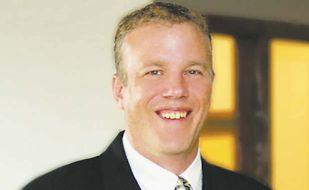
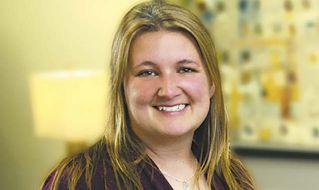

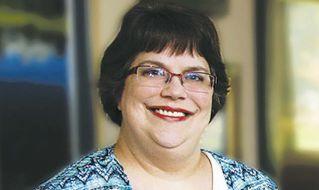







35 Helping Clients Manage Risk 70 Years of History, Planning for the Future 1.800.553.4291 - www.vaaler.com Grand Forks|Fargo|Bismarck|Minneapolis
Kim Van Sant
Matt Ahmann
Crystal Coulter
Georgia Schelberger
001645603r1
Nicola Sporbert
Training room, Harold Newman Arena, University of Jamestown.
IMAGE: UNIVERSITY OF JAMESTOWN
Training room, Harold Newman Arena, University of Jamestown. IMAGE: UNIVERSITY OF JAMESTOWN
Coach’s office in Harold Newman Arena at the University of Jamestown.
AROUND THE OFFICE
IMAGE: UNIVERSITY OF JAMESTOWN
BROUGHT TO YOU BY
INSIGHTs & INTUITION
What works best -- and what seems to work less well -when orienting new employees?
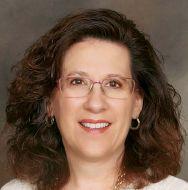
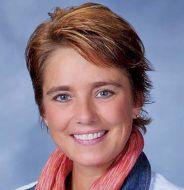
At AE2S, Day One means we onboard the individual to “team member” status, and our focus is on their success.
Throwing a new team member to the wolves does not help anyone. So, we surround new team members with valuable information and access to resources, a rich history of going beyond expectations and an excellent compensation and benefits package to take care of them and their families.
Before a new employee starts, we make sure their computer, email and voicemail are set up so they can hit the ground running. The first day on the job, we schedule an in-depth one-on-one meeting to review the company handbook, provide benefits information and answer questions. Building this strong foundation creates a positive start, and the commitment continues long after with continuing education, “Lunch and Learns” and team-building events.
At Arvig, our new-hire orientation is one day, but our on-boarding takes a full year.
And it’s important not to rush through this process. That’s why we have a well-thought-out training plan that begins at the time the job is accepted.
We urge new employees to focus on the company culture from their first day, so the newcomers immediately can get a feel for the company and know they’re part of something bigger.
We follow up in three to four months and then again after a full year. This shows the employees just how important they are to the team.
36 TWITTER.COM/PRAIRIEBIZ FACEBOOK.COM/PRAIRIEBUSINESS PRAIRIEBUSINESSMAGAZINE.COM
Q. INSIGHTs&intuition NOVEMBER 2017 VOL 18 ISSUE 11
Michelle McDonald-Trostad
HUMAN RESOURCES GENERALIST AE2S
Lori Meader DIRECTOR OF HUMAN RESOURCES ARVIG
Steve Schuster
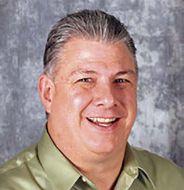
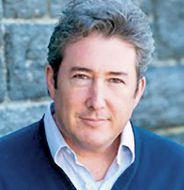 PRESIDENT
PRESIDENT
To successfully onboard new employees, you must make them feel welcomed and appreciated. Then, you need to help them understand how their role fits into the overall mission of the company. This provides purpose to each new employee.
If you put a new employee on an island by himself or herself, you risk having the employee be disengaged and searching for his or her purpose.
We’ve found at Network Center, Inc. that giving new employees time with each area of our business helps them to better understand their contribution and the impact they’ll have across the organization.
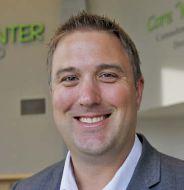
This goes a long way toward helping them understand our entire company, not just their respective department.

Something we have found that doesn’t work as well is not having a well thought out training plan. People join us at different levels of experience, and if we have not taken the time to develop a good training plan, they will not be set up with the tools they need to do their job.
DIRECTOR, HUMAN RESOURCES
Our employees are treated as valued customers, and our goal is to provide a highly engaging and personalized experience.
We know that a great onboarding program starts before the first day on the job. That’s when the thirst for knowledge is at the Everest peak.
We are transforming our programs using digital technology to simplify processes, personalize experiences and make learning activities more targeted.
New employees will learn about culture, policies and practices, self-service and how their role will drive consumer value anytime and anywhere via mobile.
When they walk through the door, the paperwork is all finished, and they have the tools and resources to be successful on the job. They feel at home. That’s what we want.
37 001643152r1 INSIGHTS & INTUITION
Sean Todd
VICE PRESIDENT OF SERVICES NETWORK CENTER, INC.
Marc Wachtfogel, Ph.D.
MINOT STATE UNIVERSITY
VICE
OF HUMAN RESOURCES MIDCO
minnesota
The university’s overall index, referred to as the Business Conditions Index, ranges between 0 and 100. An index greater than 50 indicates an expansionary economy over the course of the next three to six months.
Chart Source: David Flynn, professor and chair, Department of Economics and Finance, University of North Dakota

kiplinger’s 10 most and least tax-friendly states, 50 states
July 2009 to July 2017
Chart source: Minnesota Department of Employment and Economic Development
ASSEMBLED BY TOM DENNIS, PRAIRIE BUSINESS EDITOR
Minnesota
Second least tax-friendly “ The North Star State hits hard with income tax. t added a new top income tax rate of 9.85 percent in 2013. But what makes Minnesota really stand out s that its owest income tax rate s 5.35 percent “Property taxes are on the high side. It 's one of Kiplinger's top ten least tax-friendly states.”
Zillow Housing market overview
The graph indicates Zillow Home Value Index, zillow’s estimate of median home values in each of the named communities.
Source: Creighton University Mid-American Economy Report Source: Kiplinger.com Chart Source: Zillow.com

DATA
TWITTER.COM/PRAIRIEBIZ FACEBOOK.COM/PRAIRIEBUSINESS PRAIRIEBUSINESSMAGAZINE.COM 38
currentforecast $282K $222K $162K $101K 20162015 20182017 2014201320122011201020092008
dakota average annual pay PB BYTHENUMBERS NOVEMBER 2017 VOL 18 ISSUE 11
north
employement change by industry
80,000 60,000 40,000
County
County
Forks County
County
Creighton University Mid-American Economy reports
2004200620122016 Williams
Burleigh
Grand
Cass
South Dakota North Dakota
Wyoming Alaska South Dakota Florida Nevada North Dakota Delaware Arizona Louisiana Mississippi1 2 3 4 5 6 7 8 9 10 New Jersey Connecticut California Hawaii Vermont Maine Illinois New York Minnesota Maryland50 49 48 47 46 45 44 43 42 41 45.5 48.4 48.2 51.1 SEPT 43.8 48.7 40.5 46.8 OCT 46.5 46.5 47.6 50.2 NOV 53.1 52.3 51.0 56.5 DEC 54.7 54.7 49.7 57.2 JAN 60.5 54.3 66.8 62.4 FEB 63.2 61.8 54.3 67.2 MAR 55.5 58.4 53.9 61.7 MAY 61.4 61.2 57.3 68.2 APR 62.3 68.0 67.2 67.4 JUNE 56.1 63.2 66.7 53.3 JUL 57.5 61.8 69.1 45.5 AUG 58.2 59.4 63.9 46.6 SEPT 2016 2017 Mid-America Minnesota South Dakota North Dakota grand forks – $155K minot – $209K fargo – $223K bismarck – $267K august 2018
most tax-friendly least tax-friendly


IT’S FLU SEASON Are you prepared?
Influenza can cause you to lose up to 14 work days per year.
Immunizations can help reduce this risk to yourself, coworkers and families. Help prevent influenza, get the flu vaccine.
EssentiaHealth.org























































































 By Kirsten Baesler Kirsten Baesler
KIRSTEN BAESLER
IMAGE: N.D. DEPARTMENT OF PUBLIC INSTRUCTION
By Kirsten Baesler Kirsten Baesler
KIRSTEN BAESLER
IMAGE: N.D. DEPARTMENT OF PUBLIC INSTRUCTION

















 By Tom Dennis
By Tom Dennis




































































 PRESIDENT
PRESIDENT





